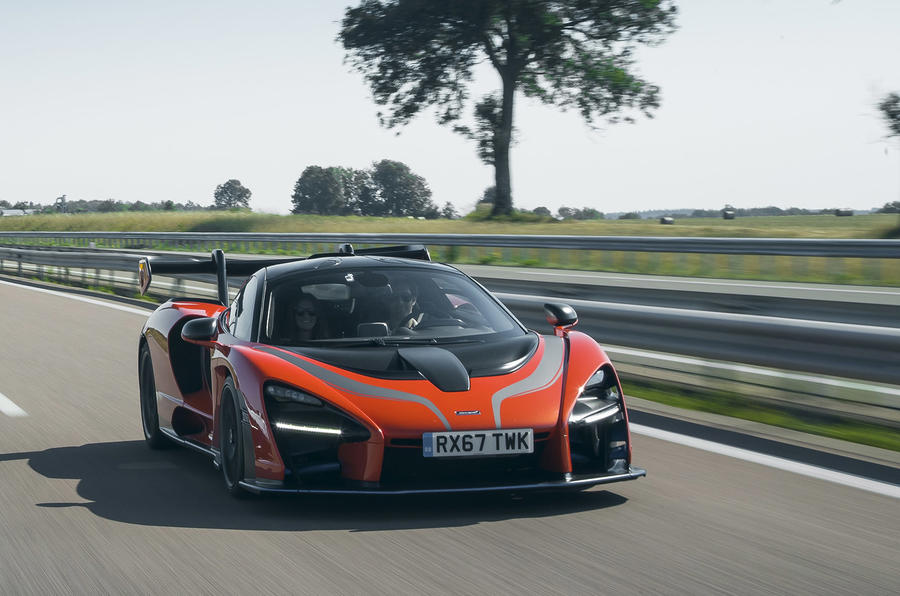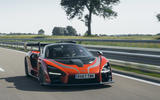What is it?
It’s the McLaren Senna, and it’s quite a serious proposition. “We wanted to create the ultimate road-legal track car,” says Andy Palmer (no, the other one), McLaren’s Ultimate Series director. It’s a carbonfibre tubbed, 789bhp, £750,000 track-focused car.
There will be 500 of them, fully homologated as a series production car for worldwide sale (the ones we’ve driven are still, technically, prototypes). It happens to make 789bhp, or 800hp, and an accompanying 800kg of downforce at 155mph. Hence the rear wing and the rest of the – shall we say – ‘challenging’ looks?
A Senna won’t take long to reach the 155mph McLaren measures downforce at, either. McLaren is usually accurate with its acceleration quotes: it says 0-60mph takes 2.7sec, 0-124mph 6.8sec and 0-186mph just 17.5sec. The top speed is 211mph. You can add to the three-quarter million pound price quite easily too, via a visit to McLaren Special Operations (MSO) for bespoke extras.
Virtually all customers will have done so for this Ultimate Series car, although don’t take that description too literally: there’ll be a further 75 track-only GTR Sennas; lighter, more powerful again. And then presumably somebody like Lanzante will do a roadgoing version of that.
Another, perhaps even more significant, number is the 1198kg the Senna weighs (before fluids). The previous Ultimate Series McLaren, the P1, weighed 1395kg in similar trim, owing to its hybrid tech. The current 720S weighs 1283kg dry.




















































Join the debate
Add your comment
Top Speed Car in the World
I love the McLaren Senna, can't wait for it to come to the game, but please no more narrow streets. Here you can read top fastest cars in the Word 2019.
Even though it can be driven on the road
As only fraction of it's potential in evidence can be exploited on a road - this is probably more about, driving it between cuircuits or from home to a cuircuit to have some fund and back home. Home naturally being an expensively outfitted garage.
Look at it this way....@
Einarbb@, look at it this way, you buy the Car,sorry, in this case your invited to buy a Car, your chosen to be offered one, right?, you wait patiently for however long it takes to screw one together and paint it in your own personal choice of color, finally it’s arrived, your new Toy to go in your play box/Garage, you drive it of and on in the first year, then, you see the next raved on about Supercar, you decide to sell your Senna, and do you know what?.......you’ll probably make money on it!, yeah!...free motoring!, the profit will cover all your expenses for the Senna last year! Plus a little left over, now tell me that’s not bad.
Senna this, Senna that...
..I am sick of hearing about that guy, they should have called it the Nigel Or the Mansell, the i would be be all over it.